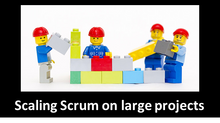10 steps to being a Great Product Owner
- Venki Prathivadi
- Sep 4, 2017
- 3 min read
Of the three roles that Scrum designates (Scrum Master, Product Owner and Developer), the Product Owner role is probably the most challenging and least understood. Not surprisingly, the effectiveness of a Product Owner also happens to be the biggest contributor to the success of the Scrum Project. This article aims to clarify the role of a Product Owner, list the traits of an effective Product Owner and offer recommendations to improve the Product Owner competencies in organizations that want to be Agile.
Product Owner role
A Product Owner plays a crucial part in bringing a new Product to life and managing the lifecycle of that Product. Accordingly, a Product Owner leads the development effort to create the Product. Creating a Product (Software or other) includes the following activities;
Articulating the Product vision
Defining the Product and deconstructing the Product into its Backlog (Components and Features – also known as Epics and User Stories in the Agile terminology)
Prioritising the Backlog in terms of Business Value to the end user / customer
Planning the Release
Managing the Budget
Managing the Stakeholders
Collaborating with the Scrum team
Attending Scrum meetings such as Release and Sprint Planning, Sprint Review, etc.
Making and clarifying decisions regarding the Product
Validating the work done
Challenges of Product Ownership
Of the three Scrum roles, perhaps the most difficult challenges are faced by the Product Owner. Scrum does not designate a single-point leadership for the team and promotes shared leadership. Yet, many practitioners would agree that a Product Owner tends to drive the Agile bus. Major challenges faced by a Product Owner, are;
Transforming the customer’s ideas into tangible product deliverables (Creating, articulating and clarifying the Product Vision and Product Backlog)
Making trade-off decisions involving priority of Product Backlog items
Convincing and achieving consensus amongst various stakeholders
Balancing the pressure to release product iterations against the development team’s capacity and capability
Negotiating with the development team on Priority, Backlog scheduling, Done criteria, Acceptance and Changes
Juggling time between Product Ownership and other responsibilities
6 traits of Great Product Owners
A Product Owner Is both a visionary and a doer
Understands the market / business / customer and development process (Scrum) well and leads strong collaboration between them
Makes quick but informed trade-off decisions in real-time
Takes the initiative to put the vision into the “Product Vision Document”
Can think and work big picture / top-down (Product àComponents and Features àBacklog). This is important to balance the tendency of Developers who think bottom-up and get bogged down in details.
Possesses practical intelligence (ability to find the best fit between themselves and the demands of the environment they operate in) and analytical intelligence (the ability to analyse and evaluate ideas, solve problems and make decisions)
Becoming a Great Product Owner (Checklist)
Walk the talk on Agile values and principles
Learn and become very familiar with the Scrum process of Software development
Understand the role and responsibilities of Product Ownership well
Be hands-on. Work closely with the team and write a Product vision document and constantly update the document. Drive the planning meetings with focus, enthusiasm and engagement
Attend daily Scrum at least 2-3 days a week if appropriate and if invited by the Development team
Be always available to the team to answer questions and clarify requirements
Be willing to reprioritise based on business dynamics
As much as possible eliminate or free yourself from other distracting work and focus on being an excellent Product Owner rather than perform 2-3 mediocre roles
Simplify project commercials and focus more on benefits. Sprints are essentially fixed-cost engagements
Ensure a state of readiness (Product vision + groomed backlog + Development team formation) before starting the first sprint












































Comments